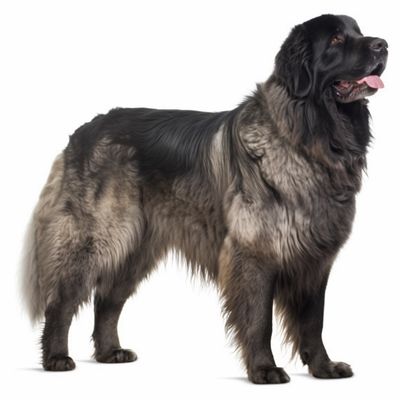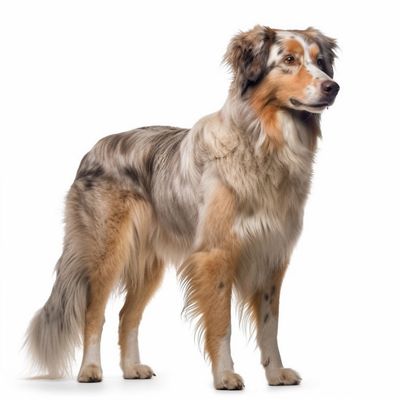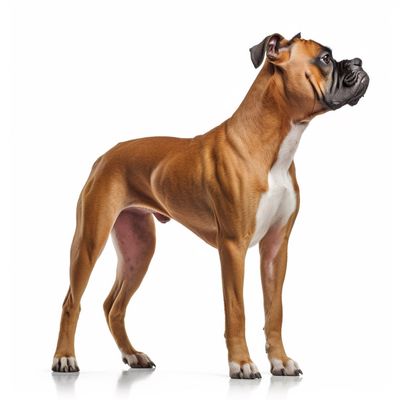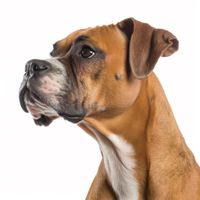Newfoundland - vs - Australian Shepherd - vs - Boxer

Newfoundlands are extra-large dogs, weighing 100-150 lbs, with a height of 26-28 inches.
Newfoundlands have a medium energy level and enjoy regular exercise, but they are not as demanding as some other breeds.
Newfoundlands require regular exercise, including daily walks and playtime, to keep them happy and healthy.
Newfoundlands are intelligent dogs, but they can be independent thinkers, making training moderately challenging.
Newfoundlands are intelligent dogs and are known for their problem-solving abilities.
Newfoundlands can adapt to various living situations, but they need enough space to accommodate their large size.
Newfoundlands are known for their gentle and protective nature towards children, making them great family dogs.
Newfoundlands generally get along well with other pets when properly socialized.
Newfoundlands are well-suited to cold climates due to their thick, double-layered coats.
Newfoundlands may struggle in hot climates due to their thick, double-layered coats.
Newfoundlands have seasonal shedding and require regular brushing to manage their thick coats.
Newfoundlands require regular grooming, including daily brushing and occasional trims, to maintain their thick, double-layered coats.
Newfoundlands bark occasionally, usually only when necessary or provoked.
Newfoundlands may have some health issues, requiring regular veterinary checkups and preventative care.

Australian Shepherds are medium-sized dogs, standing 18-23 inches tall and weighing 40-65 lbs.
Australian Shepherds have high energy levels, requiring plenty of exercise and mental stimulation.
Australian Shepherds need lots of daily exercise, including walks, runs, and activities like agility, herding, or obedience training.
Australian Shepherds are intelligent and eager to learn, making them highly trainable with positive reinforcement and consistent training.
Australian Shepherds are highly intelligent and excel at problem-solving and learning new tasks.
Australian Shepherds are adaptable but thrive best in an active household with space to exercise and work.
Australian Shepherds can be good with children, especially when properly socialized and supervised.
Australian Shepherds generally get along well with other pets when properly socialized, although their herding instincts may cause them to chase or herd smaller animals.
Australian Shepherds have a double coat that provides insulation, allowing them to handle colder climates well.
Australian Shepherds can tolerate heat, but they should be provided with shade, water, and limited exercise during the hottest parts of the day.
Australian Shepherds have a double coat that sheds seasonally, requiring regular grooming to remove dead hair.
Australian Shepherds require regular grooming, including brushing at least once a week and more frequently during shedding seasons.
Australian Shepherds have average bark tendencies and may bark for various reasons, such as alerting their owners or during playtime.
Australian Shepherds may experience some health issues and require additional care and attention, such as regular veterinary checkups, preventative care, and potential medication or treatments.

Boxers are medium to large dogs, weighing 55-70 lbs and standing 21.5-25 inches tall.
Boxers are energetic, playful, and love engaging in physical activities with their family.
Boxers need daily exercise, such as walks, runs, or playtime to keep them happy and healthy.
Boxers are intelligent, but their independent nature requires patience and consistency in training.
Boxers are quick learners and can excel in obedience training and dog sports.
Boxers can adapt to different living situations but thrive in homes with access to outdoor space.
Boxers are affectionate, patient, and protective, making them wonderful companions for children.
Boxers can get along with other pets, especially when properly socialized from a young age.
Boxers can tolerate mild cold but need extra care in extreme cold due to their short coats.
Boxers can handle warm climates, but make sure to provide shade, water, and avoid excessive exercise.
Boxers have a short coat that sheds moderately, so regular brushing can help minimize shedding.
Boxers have low grooming needs – occasional brushing and bathing will keep them clean and healthy.
Boxers have average bark tendencies and may bark for various reasons, such as alerting their owners or during playtime.
Boxers may have some health issues, requiring regular veterinary checkups and preventative care.



